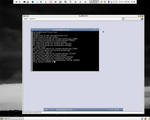Solaris to Linux Migration 2017 Amid Layoffs


-
Solaris to Linux Migration 2017
Many people have contacted me recently about switching from Solaris (or illumos) to Linux, especially since most of the Solaris kernel team were let go this year (including my former colleagues, I'm sorry to hear). This includes many great engineers who I'm sure will excel in whatever they choose to work on next. They have been asking me about Linux because I've worked for years on each platform: Solaris, illumos, and Linux, in all cases full time and as a subject matter expert. I've also done some work on BSD, which is another compelling choice, but I'll discuss that another time. The following is my opinion and not an official guide to any OS.
Switching from Solaris to Linux has become much easier in the last two years, with Linux developments in ZFS, Zones, and DTrace. I've been contributing (out of necessity), including porting my DTraceToolkit tools to Linux, which also work on BSD. What follows are topics that may be of interest to anyone looking to migrate their systems and skillset: scan these to find topics that interest you.
-
Oracle staff report big layoffs across Solaris, SPARC teams
-
Sun set: Oracle closes down last Sun product lines
None of this is a real surprise. Oracle had cut former Sun engineers and developers by a thousand employees in January. In Oracle's most recent SPARC/Solaris roadmap, the next generation Solaris 12 had been replaced by Solaris 11.next and SPARC next -- incremental upgrades.
Former Sun executive Bryan Cantrill reported, based on his conversations with current Solaris team members, that Oracle's latest layoffs were, "So deep as to be fatal: The core Solaris engineering organization lost on the order of 90 percent of its people, including essentially all management." James Gosling, Java's creator, summed it up: "Solaris ... got a bullet in the head from Oracle on Friday."
-

- Login or register to post comments
 Printer-friendly version
Printer-friendly version- 4626 reads
 PDF version
PDF version
More in Tux Machines
- Highlights
- Front Page
- Latest Headlines
- Archive
- Recent comments
- All-Time Popular Stories
- Hot Topics
- New Members
digiKam 7.7.0 is released
After three months of active maintenance and another bug triage, the digiKam team is proud to present version 7.7.0 of its open source digital photo manager. See below the list of most important features coming with this release.
|
Dilution and Misuse of the "Linux" Brand
|
Samsung, Red Hat to Work on Linux Drivers for Future Tech
The metaverse is expected to uproot system design as we know it, and Samsung is one of many hardware vendors re-imagining data center infrastructure in preparation for a parallel 3D world.
Samsung is working on new memory technologies that provide faster bandwidth inside hardware for data to travel between CPUs, storage and other computing resources. The company also announced it was partnering with Red Hat to ensure these technologies have Linux compatibility.
|
today's howtos
|









.svg_.png)
 Content (where original) is available under CC-BY-SA, copyrighted by original author/s.
Content (where original) is available under CC-BY-SA, copyrighted by original author/s.

Recent comments
1 year 11 weeks ago
1 year 11 weeks ago
1 year 11 weeks ago
1 year 11 weeks ago
1 year 11 weeks ago
1 year 11 weeks ago
1 year 11 weeks ago
1 year 11 weeks ago
1 year 11 weeks ago
1 year 11 weeks ago